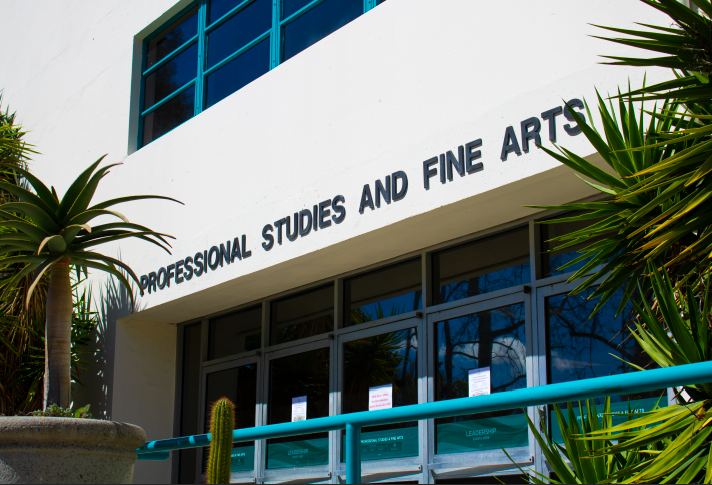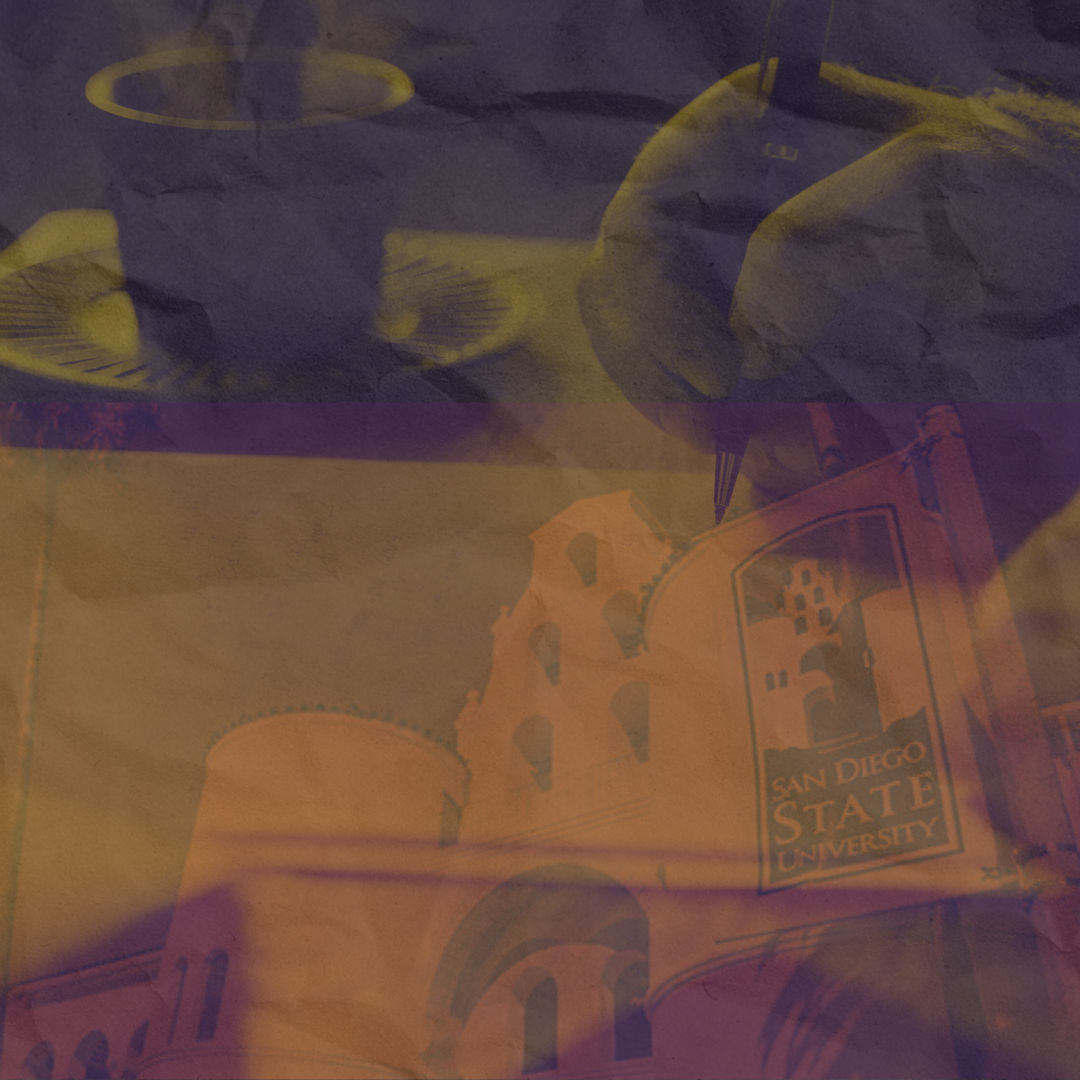This story was updated at 6:50 p.m. on Tuesday, March 12 with an official statement from the university.
The Professional Studies and Fine Arts building will temporarily close for classes beginning Wednesday, March 13, after disruptive fumes led to reports of illnesses among faculty members, according to a March 11 campus-wide email.
Some faculty members had relocated from the building as early as March 4, according to an email sent to journalism faculty by Interim Director for the School of Journalism and Media Studies Noah Arceneaux. But classes continued in the building up until Wednesday.
University spokeswoman La Monica Everett-Haynes said the delay in moving classes came as testing revealed the fumes were not at a level that could be considered toxic. She said testing by the Environmental Health and Safety Team revealed it was the odor of the construction vapor that was causing faculty members to fall ill, not toxicity.
“Now the university is being quite a bit more proactive because we do have these reports of the odors,” Everett-Haynes said. “Even though they’re not toxic, they are disruptive and the university is now choosing to close down the building during this construction project.”
According to an FAQ page attached to a March 12 campus-wide email, the building is currently set to reopen on Monday, April 8, after spring break. The higher temperatures projected for later in the week were cited as another reason for the closure.
“Dry and hot weather conditions tend to make the odors stronger and, while not known to be toxic, the odors are disruptive,” the campus-wide email, from by Interim Provost and Senior Vice President Joseph F. Johnson, Jr., said. “With an abundance of caution for the health, wellness and safety of all occupants, we are preparing to move all students, faculty and staff before the higher temperatures projected for later this week.”
Coordinator for the Hospitality and Tourism Management Masters Program Kim Stull said for her and her coworkers, the physical reactions to this odor came in the form of sore throats, itchy eyes, nausea and headaches.
“When we started smelling the fumes and complaining, nothing was done about it,” Stull said. “They put in some fans but it definitely didn’t feel like they were taking it seriously. Before they did that work and opened that roof up, they should have removed us all from that building.”
She said most of the people she worked with started to notice the effects of the fumes as early as late January. This came as a surprise as her and other faculty members were initially told the construction would be done over the holiday break. Once the odors started to become a bigger issue, Stull said not everybody was able to escape.
“When we started complaining about it we were told we could leave and go work from home if possible,” Stull said. “In my job, that’s possible. For others of my coworkers, that’s not possible.”
While faculty members received some communications from the university regarding the nature and existence of the fumes, multiple students in the building said they were still unaware of the issue as recently as the afternoon of Monday, March 11. Everett-Haynes confirmed the first campus-wide correspondence relating to the fumes came in the email sent on the evening of March 11.
Spanish junior Mia Deptolla, who had a class in the PSFA building on Monday, said she was not told about the construction-related fumes at all. Hospitality and tourism management freshman Madeleine Leones said she had also not been informed of the issue other than being told her department’s office had relocated to Adams Humanities.
“I only have one class in (PSFA), and they haven’t talked about whether we’re relocating or not,” Leones said in a March 11 interview.
She said her class has about 30 students who have been meeting in the building three times a week.
Tomasa Mauricio, director of summer residential programs for Upward Bound, works on the first floor of PSFA and said the issue required much more communication than faculty and students received. With the fumes having been present for at least a month, she said this week’s response was greatly delayed.
“I think there definitely needed to be more communication ahead of time, as opposed to trying to deal with it after the fact,” Mauricio said. “I think there was a lot of that. I think they could have avoided a lot of frustration and a lot of fear.”
Mauricio and administrative support assistant Jessica Sandoval, who both work in the same office on the first floor, said the construction-related issues did not end at the fumes. They both said their department experienced random blackouts relating to the project before even being warned the construction was happening.
“It would have been nice if they were to tell us when the construction started (and that it) would be interfering with our work, and to give us an option (to relocate) back then,” Sandoval said.
In a statement issued by SDSU on Tuesday night, the university described the situation with the fumes as “atypical” and that the odor was “the result of a resin used to adhere old roofing materials to new roofing materials.”
“While construction work is typically expected to produce strong odors that decrease over time, the situation at PSFA has been atypical,” the statement said. “The project team has implemented numerous methods to prevent these odors from entering the building from outside air intake vents located on the roof. None of these mitigation efforts have been successful so far.”
The statement also said the university does not anticipate any impacts from the construction to effect nearby buildings and that it is currently working to better monitor the building’s indoor air quality.
“SDSU has also contracted with an environmental consultant to perform air monitoring to occur during the roof work,” the statement said. “Monitoring will take place at the roof level and throughout the PSFA Building to measure the effects of the roof work on indoor air quality.”
The building will remain open through 4:30 p.m. on March 13 for faculty and students to retrieve their belongings then will be officially closed to all entry beginning Thursday, March 14.
The original story has been updated to reflect the latest information available regarding the dates of the building closure.













